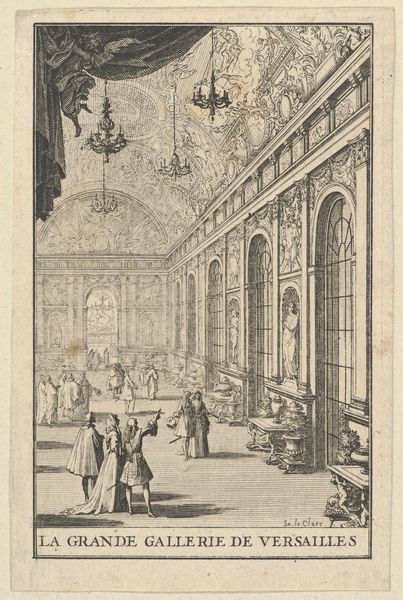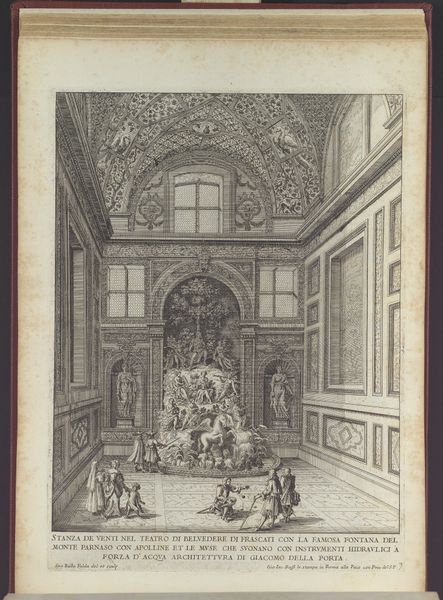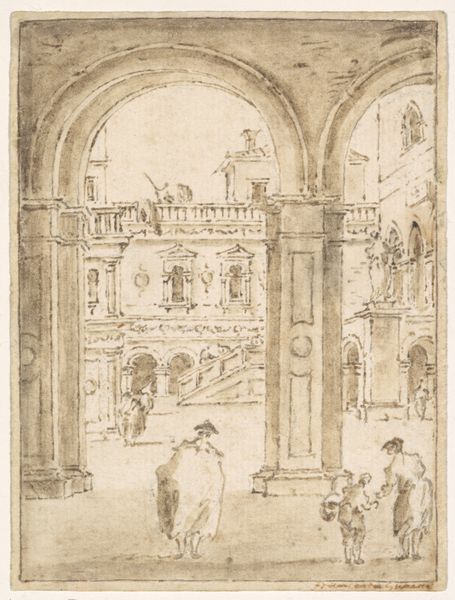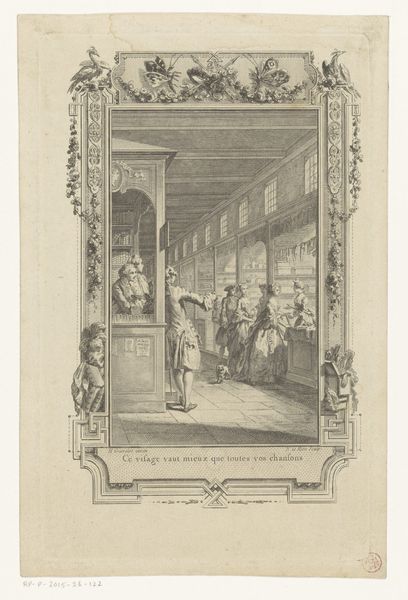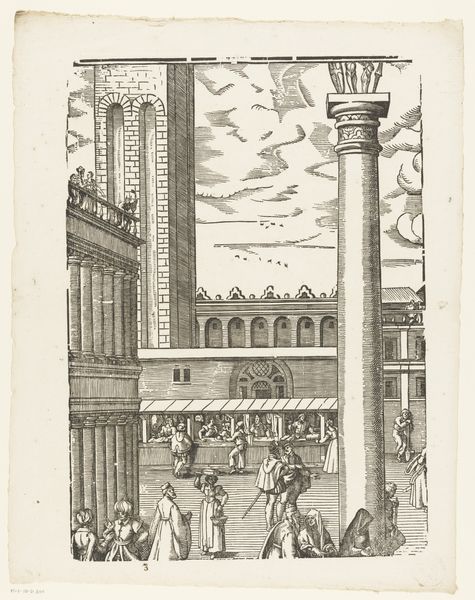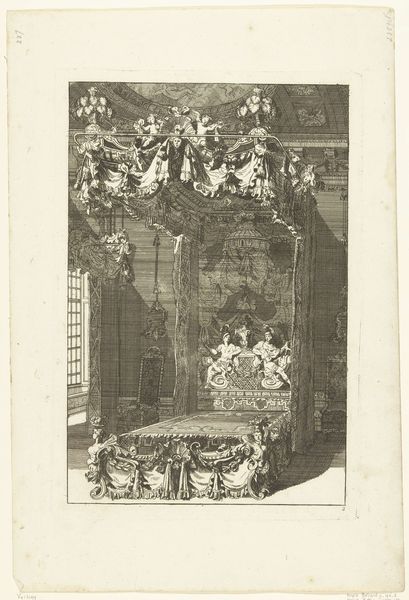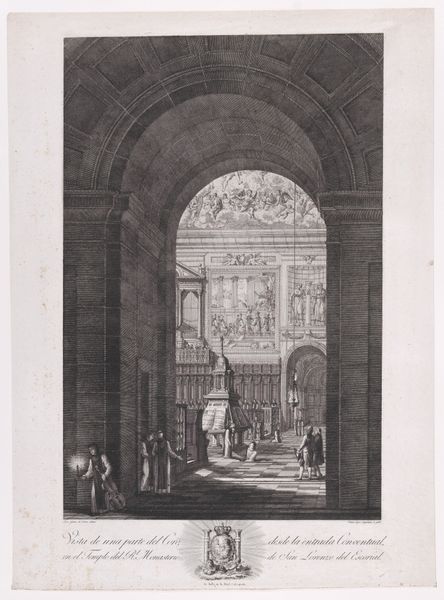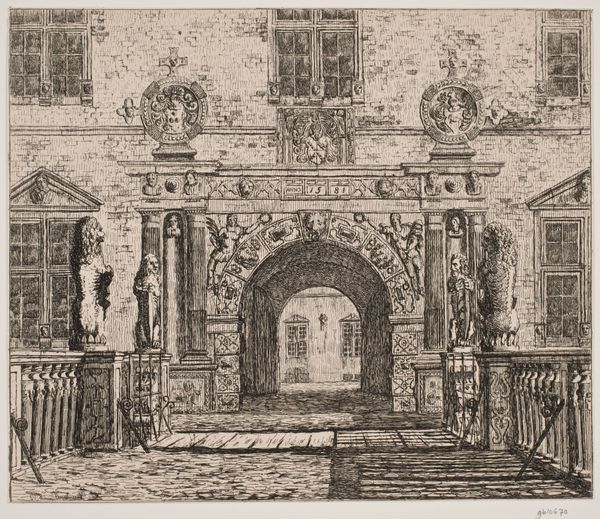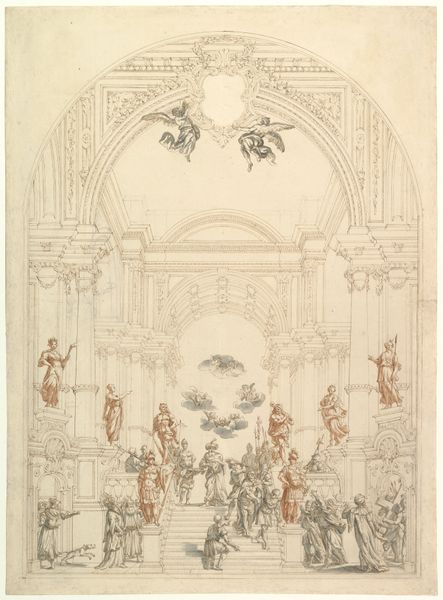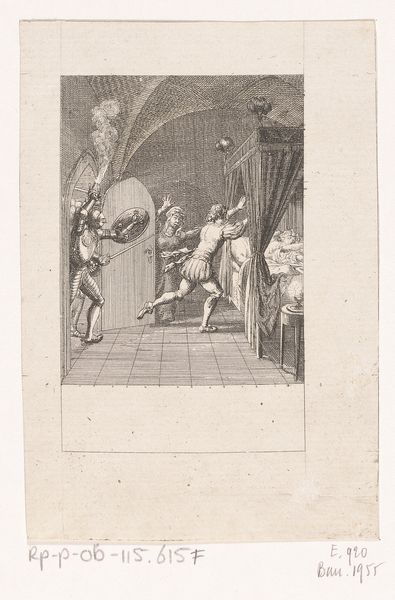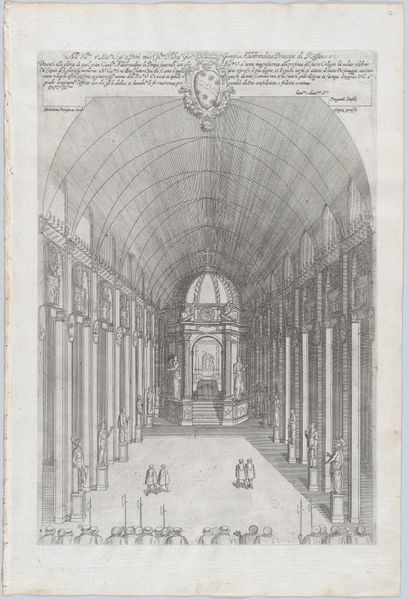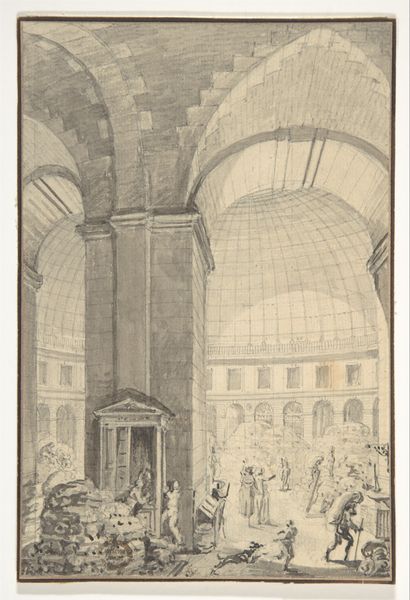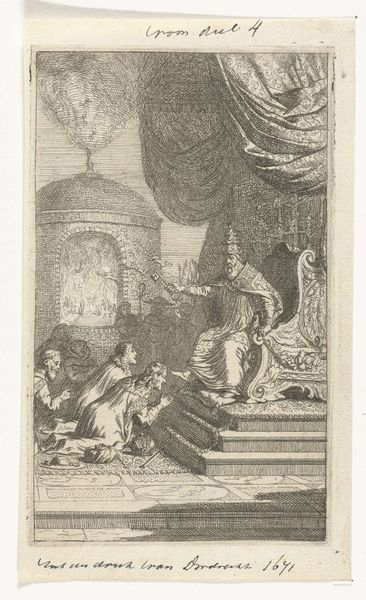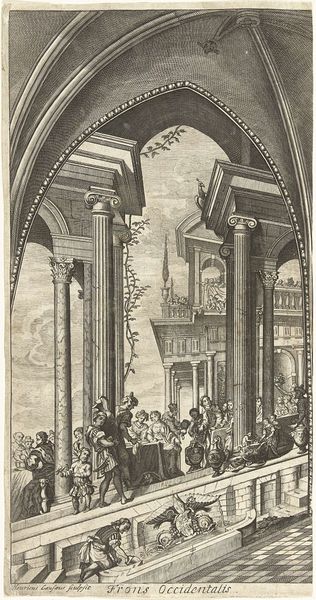
print, engraving
#
baroque
# print
#
perspective
#
cityscape
#
genre-painting
#
history-painting
#
engraving
Dimensions: height 148 mm, width 95 mm
Copyright: Rijks Museum: Open Domain
Curator: This is an engraving dating back to the period of 1688 to 1698. It depicts the Hall of Mirrors in the Palace of Versailles. Editor: My initial impression is that it tries to capture grandeur but comes off rather… ghostly. The figures seem frozen, almost like shadows, and the perspective is somewhat unsettling. Curator: Indeed. The artist here employs perspective to showcase the architectural splendor, aiming to convey the opulence of Versailles. Remember that Versailles was more than a palace; it was the center of political power, carefully curated to impress. Editor: And that’s where it gets complicated, doesn’t it? The sheer scale of the Hall and the detail suggests wealth extracted through exploitation and a consolidation of power in the hands of the monarchy. This image normalizes a profoundly unequal system. The ‘frozen figures’ you mentioned represent an interesting point; they appear like statuesque beings enjoying their positions of authority as commoners likely struggle to feed themselves or were conscripted as cannon fodder in the monarch’s wars. Curator: The Baroque style prevalent here, with its emphasis on drama and ornamentation, served the purpose of glorifying the monarchy and establishing an awe-inspiring symbol of authority. It’s interesting how techniques like engraving are deployed to reproduce and disseminate that power to wider audiences. Editor: That’s precisely what concerns me. Art isn't just a passive reflection, but a tool. This engraving isn't a neutral record; it's part of a project aimed to validate and reproduce the regime's image, effectively masking the stark realities of life for ordinary people outside the palace walls. I also cannot help thinking that it resembles a sort of movie or theater set. A background in front of which political theater can be arranged. Curator: Thinking about the artwork today I recognize the artist succeeded to display a glimpse into a world that was quite extraordinary for its time, serving to create something quite iconic. It presents itself as a window into an age of opulence and political maneuvering. Editor: For me, looking at it today pushes me to think critically about representation and the legacies of power structures embedded within our historical narratives, I will never see it as ‘just’ an opulent glimpse of history.
Comments
No comments
Be the first to comment and join the conversation on the ultimate creative platform.
